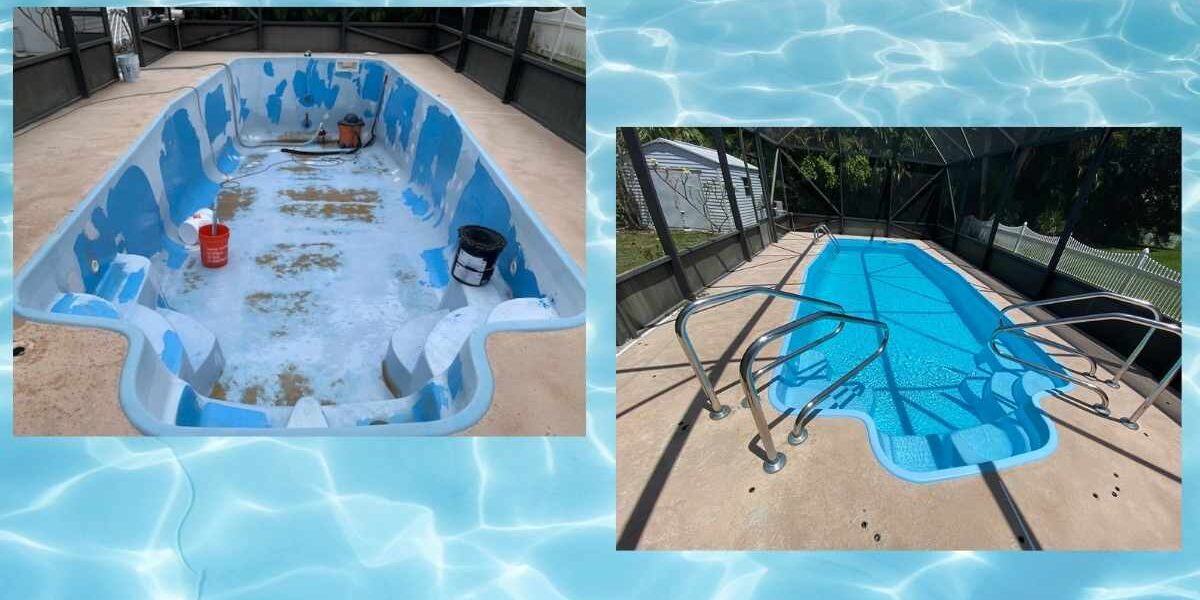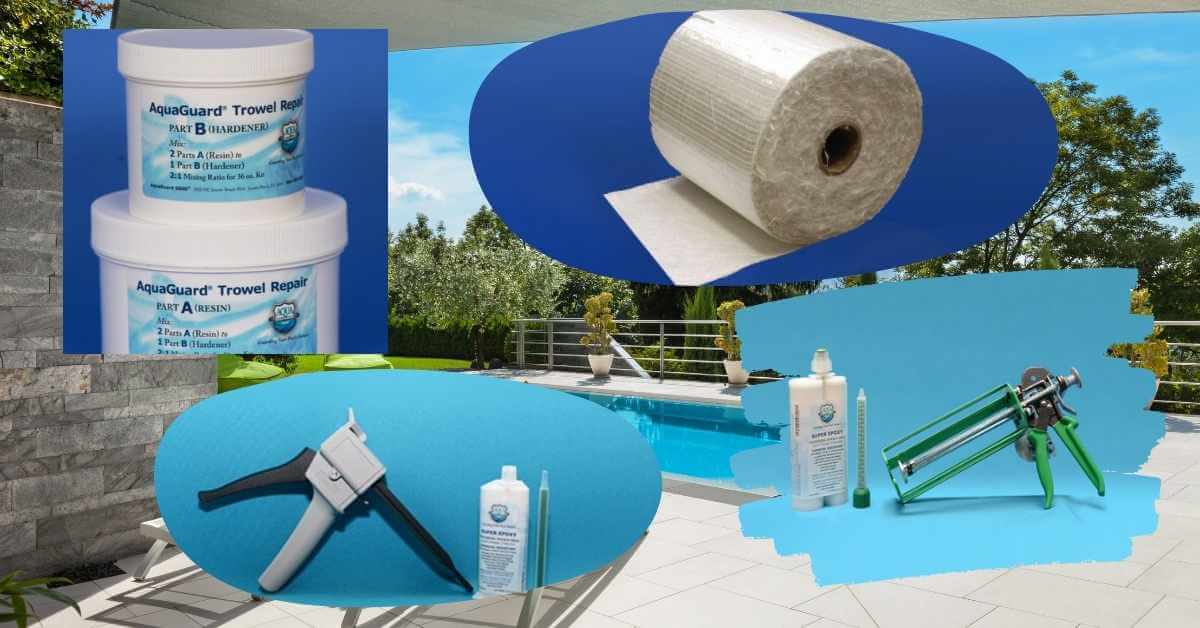Fiberglass pools can remain intact and safe to swim in for years with regular maintenance. However, simple problems like improper installation and pressure imbalances can lead to hefty damage if ignored.
Routine maintenance, such as running your pool filter at a steady rate and monitoring the pH levels of the water, reduces the chance of developing a severe problem that will require extensive pool repair. Professional fiberglass pool repair costs up to $7,000, depending on the specifics of your pool. However, fixing minor cracks and bulges at home is a cost-effective alternative.
Fiberglass Pool Repair: Simple 3 Steps to Follow
Below, we’ll explain how to repair minor imperfections in a fiberglass pool. The essential equipment for fixing cracks and bulges includes:
● Ruler
● Water-soluble marker
● Electric disc sander
● Cutting wheel
● Safety equipment (gloves, glasses, and mask)
Step #1: Assess the Damage
To assess the common problems of a fiberglass pool, drain the pool entirely. Bulges and cracks that weren’t apparent will become fully visible.
Then, allow the space to dry completely. Moisture will hinder the effectiveness of any repairs. We don’t recommend attempting to repair the crack while the pool is filled with water.
With your marker, roughly identify the damaged areas. Additional signs of hidden issues include peeling paint or the walls loosening.
Step #2: Sand the Damaged Areas
Before sanding, put on your safety glasses to prevent dust from landing in your eyes. For extra protection, wear a mask and gloves.
With the electric disk sander, smooth the marked areas. The surface around each crack or bulge should no longer contain residual dust or peeling paint. Then, using your ruler and marker, mark points about 2” around the damaged areas.
Remove the sanding disc and attach the cutting wheel. Its diamond edge ensures a precise cut. With the tool, cut following the marked points to the crack’s depth.
This removes the crack from the fiberglass. It also prevents you from cutting excess amounts out of the pool.
Step #3: Use the Repair Kit
A kit for fiberglass pool repairs may shop at a swimming pool supply store near you which includes multiple components: a paste or putty, a gel coat, a bonding coat, a sealant, and fiberglass replacement. Follow the instructions on the repair kit.
Apply the bond coat first to coat the area you just removed. This closes the space between the gap and the pool’s surface. Allow it to dry, following the instructions on the packaging.
Second, layer the putty (or paste) over the bond coat. Smooth the putty’s surface and wait for it to dry. Then manually sand it with sandpaper discs or use the electric sander again for a smoother result.
The gel coat acts as an adhesive between the dried putty and the fiberglass cloth. Apply the coat liberally and, before it dries, place the fiberglass on top.
Press out all the bubbles using a roller or any flat, firm item. This prevents bulges and cracks from developing in the same area later. Cement the cloth in place with an additional layer of gel coat and allow it to dry.
The last step is to apply the sealant. The drying time depends on the sealant and the weather, but you shouldn’t refill the pool until it is completely dry. If you try to refill the pool too early, the repair may not be successful.
Read more about our blog: The Pros and Cons of Fiberglass Pools.
How Can You Prevent Damage to Your Fiberglass Pool?
Installing a sump drain system dramatically reduces the need for fiberglass pool repair. A sump drain helps maintain perfect pressure for the pool’s water level. It also prevents pre-existing bulges from turning into cracks.
Providing a solid foundation for your pool will prevent damage to the fiberglass shell. Placing a sand foundation beneath stops any leakage.
Some pool contractors also recommend gravel to protect the foundation. However, many professionals recommend sand as the first choice for pool foundations. A gravel base could damage the swimming pool’s structural integrity if installed incorrectly.
Debris like weeds or wind-blown objects often causes minor abrasions. This weakens the fiberglass’s exterior. It also affects the pool’s vacuum and filter systems if left disregarded.
Bulges can occur when there are pressure imbalances between the two sides of the pool, such as when you drain the pool or when groundwater levels rise. To prevent this, keep the pool filled to the level recommended by the manufacturer as often as possible. Check this out for more pool care recommendations.
Fiberglass pool repair sometimes requires professional assistance, and there’s no better source of help than Aquaguard 500! We ensure a durable and beautiful finish to all your pool repairs. Contact Aquaguard 500 by calling a representative today at (772) 758-2370 for any questions or assistance!








